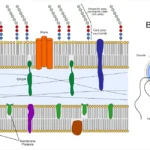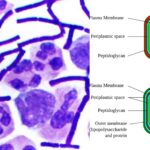what is the difference between aerobic and anaerobic respiration
what is the difference between aerobic and anaerobic respiration
Answered
Aerobic and anaerobic respiration are two different processes cells use to produce energy (in the form of ATP) from glucose. They differ mainly in the presence of oxygen, the amount of energy produced, and the byproducts generated.
Aerobic Respiration
1. Oxygen Requirement:
Aerobic respiration requires oxygen.
2. Location:
It occurs in the mitochondria of eukaryotic cells.
3. Process:
Glycolysis: Glucose is first broken down into pyruvate in the cytoplasm, producing 2 ATP and 2 NADH.
Pyruvate Oxidation: Pyruvate is transported into the mitochondria and converted into acetyl-CoA.
Citric Acid Cycle (Krebs Cycle): Acetyl-CoA enters the citric acid cycle, generating NADH and FADH₂ while releasing CO₂.
Electron Transport Chain (ETC) and Oxidative Phosphorylation: NADH and FADH₂ donate electrons to the ETC, driving the production of a large amount of ATP (around 28-32 ATP). Oxygen acts as the final electron acceptor, forming water.
4. Energy Yield:
Aerobic respiration produces a high yield of ATP, typically around 30-32 ATP molecules per glucose molecule.
5. Byproducts:
The main byproducts are carbon dioxide (CO₂) and water (H₂O).
6. Efficiency:
Aerobic respiration is more efficient than anaerobic respiration because it fully oxidizes glucose, extracting more energy.
Anaerobic Respiration
1. Oxygen Requirement:
Anaerobic respiration does not require oxygen.
2. Location:
It occurs in the cytoplasm of the cell.
3. Process:
Glycolysis: Like in aerobic respiration, glucose is broken down into pyruvate, producing 2 ATP and 2 NADH.
Fermentation: Since oxygen is not available to accept electrons, cells use fermentation to regenerate NAD⁺ from NADH, allowing glycolysis to continue. The specific pathway depends on the organism:
Lactic Acid Fermentation: Pyruvate is converted into lactic acid (in animal muscles and some bacteria).
Alcoholic Fermentation: Pyruvate is converted into ethanol and carbon dioxide (in yeast and some plants).
4. Energy Yield:
Anaerobic respiration produces a low yield of ATP, typically only 2 ATP molecules per glucose molecule.
5. Byproducts:
The byproducts depend on the type of fermentation:
Lactic acid in lactic acid fermentation.
Ethanol and carbon dioxide in alcoholic fermentation.
6. Efficiency:
Anaerobic respiration is less efficient than aerobic respiration because glucose is only partially oxidized, resulting in much less ATP production.
Summary of Differences
Oxygen: Aerobic respiration requires oxygen; anaerobic respiration does not.
Energy Yield: Aerobic respiration yields more ATP (30-32 ATP) compared to anaerobic respiration (2 ATP).
Byproducts: Aerobic respiration produces CO₂ and H₂O, while anaerobic respiration produces either lactic acid or ethanol and CO₂.
Location: Aerobic respiration occurs in the mitochondria, whereas anaerobic respiration occurs in the cytoplasm.




